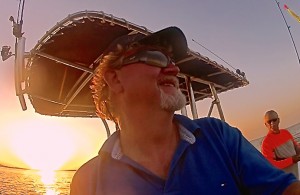prescription
 I recently realized that I was missing a lot of what goes on around me when I’m fishing in the Chesapeake Bay due to weakened eyesight. Up to now, I’ve been purchasing drug-store reading glasses that I’d carry around in my tackle bag and drag out whenever I needed to tie on a lure. That worked fine until I started missing little details that my fishing partners were picking up on. I’ve always prided myself in being the first one on the boat to pick up working birds on the horizon. After almost a year of listening to others say, “Do you see those birds?,” I decided reading glasses aren’t enough, and it’s time to make the change to prescription glasses. Since I wear sunglasses most of the time when I’m fishing, I moved on to prescription sunglasses as well.
I recently realized that I was missing a lot of what goes on around me when I’m fishing in the Chesapeake Bay due to weakened eyesight. Up to now, I’ve been purchasing drug-store reading glasses that I’d carry around in my tackle bag and drag out whenever I needed to tie on a lure. That worked fine until I started missing little details that my fishing partners were picking up on. I’ve always prided myself in being the first one on the boat to pick up working birds on the horizon. After almost a year of listening to others say, “Do you see those birds?,” I decided reading glasses aren’t enough, and it’s time to make the change to prescription glasses. Since I wear sunglasses most of the time when I’m fishing, I moved on to prescription sunglasses as well.
 It turns out there’s a lot more to know about sunglasses than I thought. I went for many years using the cheapest sunglasses I could find. I’m paying for that mistake now with diminished vision and hypersensitivity to light. It all comes down to ultraviolet (UV) rays. Inexpensive, off-the-rack sunglasses provide very little or no UV protection. They darken your vision, but they don’t block the damaging rays. The darkening causes your iris to open wider than usual and allow more light, and therefore more UV rays, to injure your eyes. You don’t notice it so much when you’re young, but as you get older, it becomes a lot more obvious.
It turns out there’s a lot more to know about sunglasses than I thought. I went for many years using the cheapest sunglasses I could find. I’m paying for that mistake now with diminished vision and hypersensitivity to light. It all comes down to ultraviolet (UV) rays. Inexpensive, off-the-rack sunglasses provide very little or no UV protection. They darken your vision, but they don’t block the damaging rays. The darkening causes your iris to open wider than usual and allow more light, and therefore more UV rays, to injure your eyes. You don’t notice it so much when you’re young, but as you get older, it becomes a lot more obvious.
My search for the right sunglasses started with some background research about polarization. I learned that light waves normally enter our eyes from all directions. When light is reflected from a surface – like water – the waves orient themselves along a single, horizontal axis. When the waves line up, it’s called polarization and results in very bright concentrations of light. It’s not only harmful to the eye, but it can make it difficult to see clearly.


